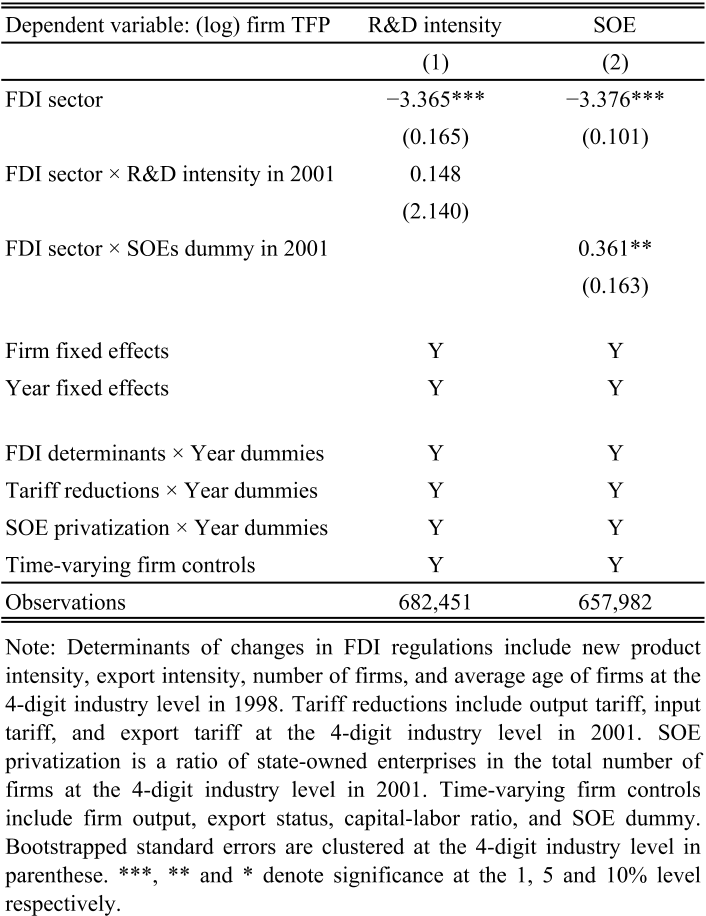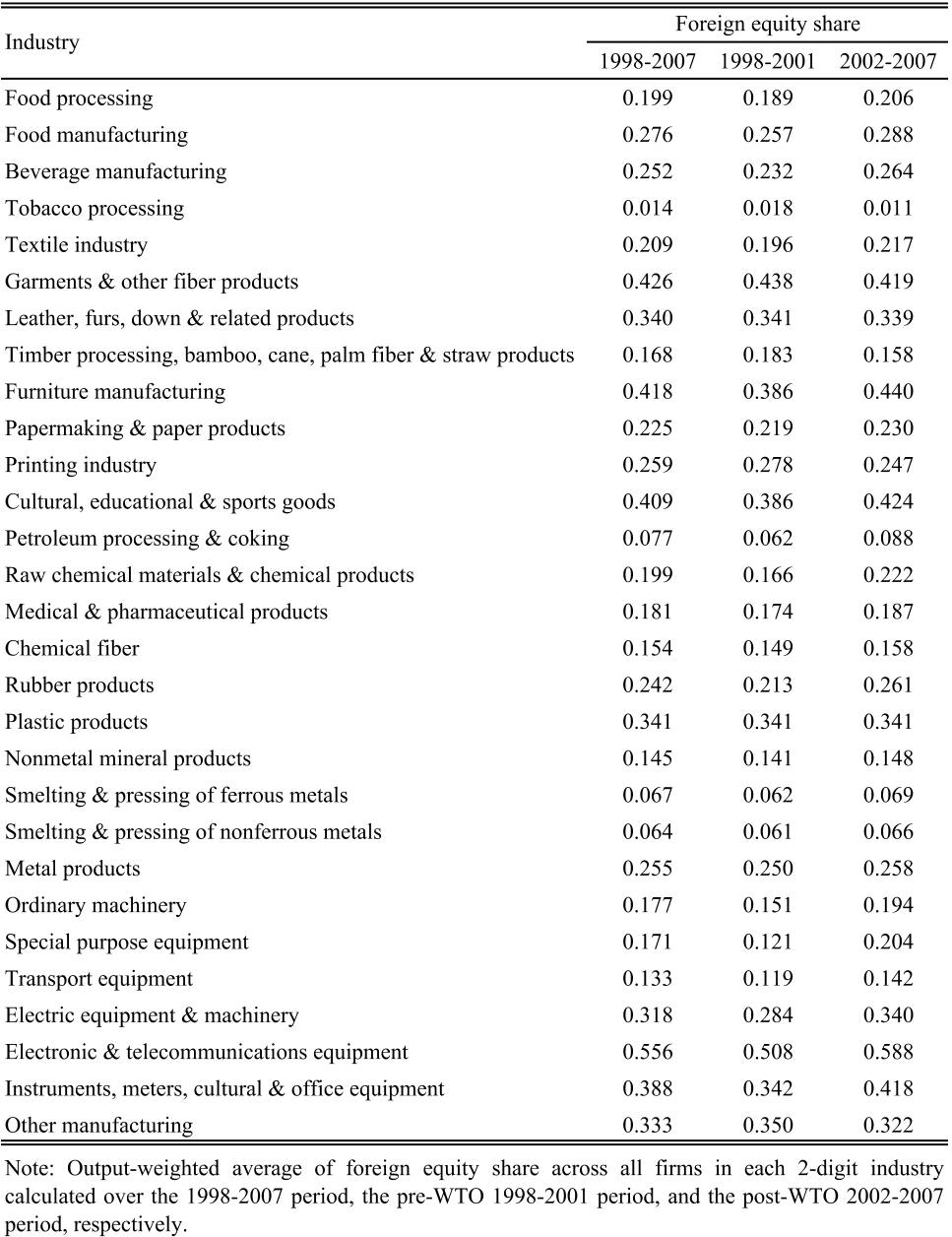Identifying FDI spillovers
TLDR
In this paper, the authors improved on the strategy used in the literature to identify the spillover effect of horizontal foreign direct investment (FDI) by taking advantage of the plausibly exogenous relaxation of FDI regulations on China's World Trade Organization accession at the end of 2001.About:
This article is published in Journal of International Economics.The article was published on 2017-07-01 and is currently open access. It has received 281 citations till now. The article focuses on the topics: Spillover effect & Foreign direct investment.read more
Figures
Citations
More filters
Journal ArticleDOI
Foreign Direct Investment and Air Pollution: Re-Estimating the “Pollution Haven Hypothesis” in China
TL;DR: Based on the relaxation of China's FDI regulation policy as well as the China Environmentally Extended Input-Output database, the authors utilize a difference-in-differences methodology and investigate the casual effects of FDI liberalization on air pollution intensity.
Journal ArticleDOI
Gender segregation in the causal effect of foreign direct investment on educational attainment: the Chinese experience
TL;DR: The authors examined the causal effect of foreign direct investment on educational attainment through the lens of gender segregation in China and found that a more prominent FDI presence causes higher educational attainment, particularly for women.
Journal ArticleDOI
Intangible Assets and Foreign Ownership in International Joint Ventures: Moderating Role of Related and Unrelated Industrial Agglomeration
Tianchen Hu,Rui Guo,Lutao Ning +2 more
TL;DR: In this article , the authors studied how foreign ownership is used to manage knowledge leakage and how local industrial structures moderate the relationship between intangible assets and foreign ownership in international joint ventures (IJVs).
Posted Content
Does Foreign Direct Investment Lead to Industrial Agglomeration
TL;DR: In this article, the effect of foreign direct investment on industrial agglomeration is studied. And the authors find that FDI actually affects industrial aggoglomeration negatively, while the conventional wisdom tends to suggest that FDC attracts domestic firms to cluster for various aggloomation benefits, in particular technology spillovers.
Journal ArticleDOI
Special economic zones, export status, and firms’ productivity: Theory and evidence from China
TL;DR: In this article , the authors explored the impact of special economic zones (SEZs) policy and export status on firms' productivity and showed that preferential policies are responsible for the productivity ranking of firms.
References
More filters
Journal ArticleDOI
How Much Should We Trust Differences-In-Differences Estimates?
TL;DR: In this article, the authors randomly generate placebo laws in state-level data on female wages from the Current Population Survey and use OLS to compute the DD estimate of its "effect" as well as the standard error of this estimate.
Journal ArticleDOI
The Impact of Trade on Intra-Industry Reallocations and Aggregate Industry Productivity
TL;DR: This paper developed a dynamic industry model with heterogeneous firms to analyze the intra-industry effects of international trade and showed how the exposure to trade will induce only the more productive firms to enter the export market (while some less productive firms continue to produce only for the domestic market).
Posted Content
The Impact of Trade on Intra-Industry Reallocations and Aggregate Industry Productivity
TL;DR: In this paper, a dynamic industry model with heterogeneous firms is proposed to explain why international trade induces reallocations of resources among firms in an industry and contributes to a welfare gain.
Posted Content
The Dynamics Of Productivity In The Telecommunications Equipment Industry
George S Olley,Ariel Pakes +1 more
TL;DR: In this article, the authors developed an estimation algorithm that takes into account the relationship between productivity on the one hand, and both input demand and survival on the other, guided by a dynamic equilibrium model that generates the exit and input demand equations needed to correct for the simultaneity and selection problems.
Posted Content
R&D Spillovers and the Geography of Innovation and Production
TL;DR: In this paper, the spatial distribution of innovation activity and the geographic concentration of production are examined, using three sources of economic knowledge: industry R&D, skilled labor, and the size of the pool of basic science for a specific industry.
Related Papers (5)
Do Domestic Firms Benefit from Direct Foreign Investment? Evidence from Venezuela
Brian J. Aitken,Ann Harrison +1 more





